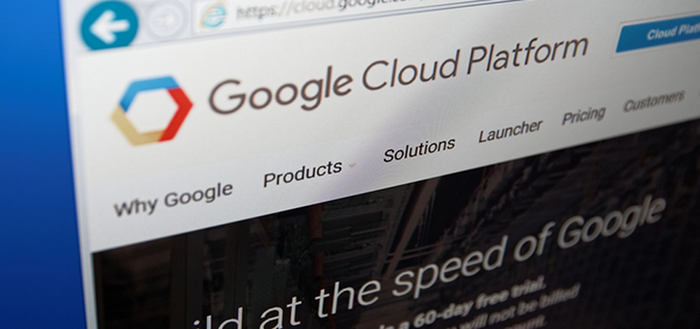Oro: How GCP smoothed our path to PCI DSS compliance
Sergiy Fakas
Information Security Officer, Oro Inc.
Editor’s note: We recently we made a bunch of security announcements, and today we’re sharing a story from Oro, Inc., which runs its OroCommerce e-commerce service on Google Cloud Platform, and was pleasantly surprised by the ease and speed with which they were able to demonstrate PCI DSS compliance. Read on for Oro’s information security officer’s take on achieving PCI DSS compliance in the cloud.
Building and running an e-commerce website poses many challenges. You want your website to be easy to use, have an attractive design and an intuitive user interface. It must scale during peak seasons like Black Friday and Cyber Monday. But equally, if not more important, is information security. E-commerce websites are frequent targets because they handle financial transactions and payment card industry (PCI) information such as credit and debit card numbers. They also connect into many other systems, so it must meet many strict infosec industry standards.
If you have an e-commerce website, achieving PCI DSS compliance is critical. As a Chief Information Security Officer (CISO), Chief Information Officer (CIO), Chief Technology Officer (CTO) or other Infosec specialist, you may be concerned about PCI compliance on cloud infrastructures. Here at Oro, the company behind the OroCommerce B2B eCommerce platform, we addressed our PCI DSS compliance requirements by using Google Cloud Platform (GCP) as our Infrastructure-as-a-Service (IaaS) platform, and pass the benefits on to our OroCommerce customers. Achieving PCI DSS compliance may not be as easy as googling the closest pizza shops or gas stations, but Google Cloud’s IaaS platform certainly simplifies the process, ensuring you have everything needed to be compliant.
Using cloud and IaaS wasn’t always our top choice for building a PCI DSS-compliant website. Initially, our customers were reluctant to put their precious data into another party’s hands and store it somewhere in a foggy cloud. But nowadays, attitudes have changed. GCP provided us with strong support and a variety of tools to help build a PCI DSS compliant solution.


We had an excellent experience partnering and working with Google to complete the PCI DSS certification on our platform-as-a-service (PaaS) that hosts customized OroCommerce sites for Oro customers. We're proud to partner with Google Cloud to offer our customers a secure environment.
Building PCI DSS compliant infrastructure
At its core, building a PCI DSS compliant infrastructure requires:- The platform used to build your service must be PCI DSS compliant. This is a direct compliance requirement.
- Your platform must provide all the tools and methods used to build secure networks.
Google helped with both of these. The first point was easy, since all GCP services are PCI DSS compliant. In addition, Google provided us with a Shared Responsibility document that lists all PCI DSS requirements. This document explains the details of how Google achieves compliance and what Google customers need to do above and beyond that to support a compliant environment. This document not only has legal value but if used as a checklist, it can be a useful tool when going for PCI DSS certification.
For example, Google supports PCI DSS requirement #9, which mandates the physical security of a hosting environment including the need for guards, hard disk drive shredders, surveillance, etc. Hearing that Google takes the responsibility to protect both hardware and data from physical theft or damage was very reassuring. We rely on GCP tools to protect against inappropriate access and ensure day-to-day information security.


Another key requirement of a secure network architecture (and PCI DSS) is to hide all internal nodes from external access, control all incoming and outgoing traffic, and use network segregation for different application tiers. OroCommerce fulfills these requirements by using Google’s Virtual Private Cloud, firewall rules, advanced load balancers and Cloud Identity and Access Management (IAM) for authentication control. Google Site Reliability Engineers (SRE) have secure connections into production nodes inside the isolated production network using Google’s 2-step authentication mechanisms.
Also, we found that we can safely use Google-provided Compute Engine images based on up-to-date and secure Linux distributions. This frees the sysadmin from hardening of the OS, so they can pay more attention to vulnerability management and other important tasks.
While the importance of a secure infrastructure, access control, and network configuration is well-known, it’s also important to build and maintain a reliable logging and monitoring system. The PCI DSS standard puts an emphasis on audit trails and logs. To be compliant, you must closely monitor environments for suspicious activity and collect all needed data for a predetermined length of time to investigate any incidents. We found the combination of Stackdriver Monitoring and Logging, plus big data services such as BigQuery, helped us meet our monitoring, storing and log analysis needs. With Stackdriver, we monitor our production systems and detect anomalies in a thorough and timely manner, spending less time on configuration and support. We use BigQuery to analyze our logs so engineers can easily figure out what happened during a particular period of time.
Back in 2017 when we started to work on getting PCI DSS compliance for OroCommerce, we expected to spend a huge amount of time and resources on this process. But as we moved forward, we figured out how much GCP helped us to meet our goal. Having achieved PCI DSS compliance, it’s clear that choosing GCP for our infrastructure was the right decision.



